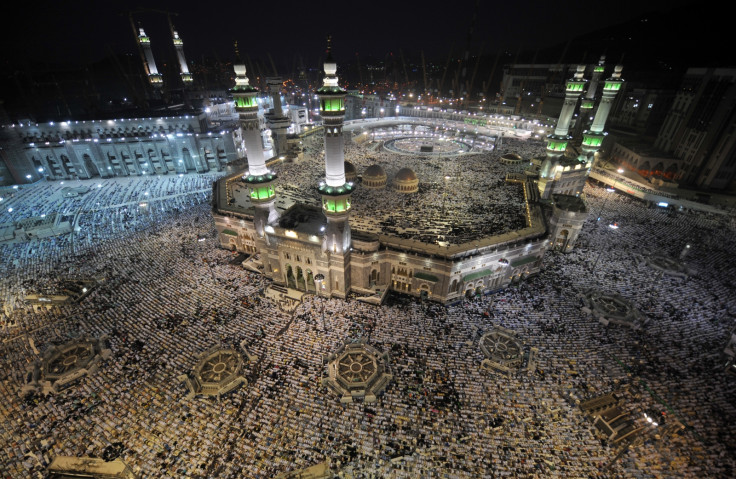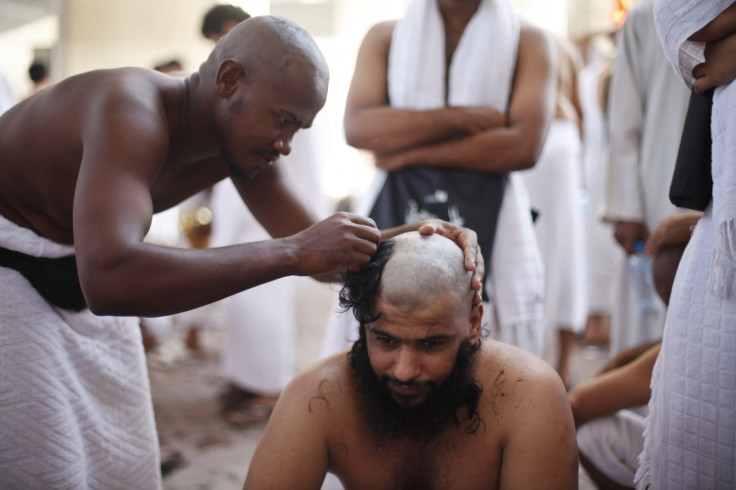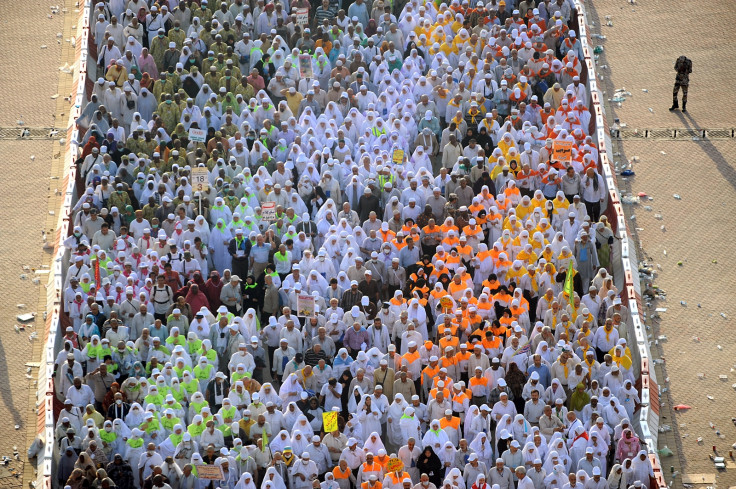Hajj 2014: Ten Things Muslims Must do During the Mecca Pilgrimage

In the largest gathering of people in the world, over two million Muslim pilgrims make the annual journey to Mecca, Saudi Arabia each year. As the final, fifth pillar of Islam, it is a mandatory religious duty for adult Muslims which must be carried out at least once a lifetime, if they are physically and financially able to do so.
Fiqh literature, the Islamic jurisprudence, describes how a pilgrim should carry out the rites of Hajj. In general, participants follow handbooks and expert guides to successfully fulfil the requirements of the pilgrimage.
Ihram
Around six miles from Mecca, pilgrims enter into a state of holiness known as Ihram. Men are required to wear two white seamless cloths, with no knots or stitched items. Footwear should allow the ankle and back of the foot to be exposed, and no perfume must be used on the body. Cutting nails, shaving and sexual relations are all forbidden.
Women are forbidden to wear the Burqa and Niqab, as they must have their faces uncovered. There is no gender segregation during Hajj, to remind pilgrims that men and women will be standing side by side on the Day of Judgment – Allah's final assessment of humanity.

Tawaf
Pilgrims enter the Grand Mosque, Masjid al-Haram, and walk seven times counter-clockwise around the Kaaba, the central cuboid building. Each circuit starts with the kissing and touching of the Black Stone, Hajar al-Aswad. If crowds prevent this, a pilgrim may point to the stone.
Eating is not permitted but the drinking of water is allowed, because of the risk of dehydration due to the often high humidity in Mecca. Men are encouraged to perform the first three circuits at a hurried pace, known as Ramal.
Two Rakaat prayers follow the circuits and afterwards, pilgrims drink from the Zamzam well – made available in coolers throughout the Mosque.
Sa'ay
Tawaf is followed by sa'ay, walking or running seven times between the hills of Safa and Marwah. The area is now entirely enclosed by the Masjid al-Haram mosque and can be accessed via air-conditioned tunnels.
Pilgrims are advised to walk the circuit, but two green pillars mark a short section of the path where they are allowed to run. Afterwards, male pilgrims shave their heads and women generally clip a portion of their hair which completes the rite and ends the restriction of Ihram.

First day of Hajj: 8<sup>th Dhu al-Hijjah
After the morning prayer, pilgrims proceed to Mina, where they spend the whole day and offer noon, afternoon, evening and night prayers.
Second day: 9<sup>th Dhu al-Hijjah
Before noon, pilgrims arrive at Arafat Mount, also known as Mercy Mount, an area of barren land around 20km east of Mecca, where they repent on their sins. This lasts until sunset and is known as "standing before God" – a pilgrim's Hajj is considered invalid if they do not spend the afternoon on Arafat.
Ramy al-Jamarat - The Stoning of the Devil
This takes place on the third day, 10<sup>th Dhu al-Hijjah. Back at Mina, the pilgrims perform a symbolic stoning of the devil by throwing seven stones at only the largest of the three pillars, known as Jamrat al-Aqabah, which are said to represent Satan. For safety reasons, the pillars were replaced by long walls in 2004, with basins to collect the pebbles.

Animal sacrifice
After the casting of stones, animals are slaughtered to commemorate the story of Abraham and Ishmael. Traditionally the pilgrims slaughtered the animal themselves, or oversaw the slaughtering. Today many pilgrims buy a sacrifice voucher in Mecca before the greater Hajj begins, which allows an animal to be slaughtered in their name on the 10th, without the pilgrim being physically present.
Tawaf Al-Ifaadah
On the same or following day, pilgrims revisit the Masjid al-Haram mosque for another tawaf, to represent being in a hurry to respond to God.
Fourth day: 11th Dhu al-Hijjah/ Fifth day: 12th Dhu al-Hijjah
At noon on the fourth day, pilgrims throw seven pebbles at each of the three pillars in Mina. On the fifth, the same process is repeated.
Tawaf al-Wida
Before leaving Mecca, pilgrims perform a farewell tawaf called the Tawaf al-Wida. "Wida" means "to bid farewell".
© Copyright IBTimes 2025. All rights reserved.






















